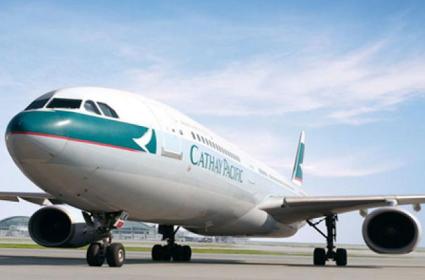Narrow Escape For 244 Passengers Aboard Hong Kong Flight After Bird Strike

Hyderabad: A Hong Kong-bound Cathay Pacific flight had a narrow escape when it was hit by a bird before flying into its full altitude in the wee hours on Sunday.
The flight which took off at 2.45am with 244 passengers aboard from Rajiv Gandhi International Airport here had to return and emergency land at the airport after a bird crashed into it at a low altitude after 35 minutes.
The airlines staff comforted the panic-stricken passengers at Novotel Hotel before the flight left for Hong Kong some time later.
How A Bird Strike Can Happen?
Bird strikes usually occur when an airplane is flying at low altitudes. The most favorable conditions for such incident, generally called a 'bird strike' are during take-off or landing of airplanes. The reason for this is obvious; most birds fly at low altitudes, to there is a greater risk of hitting an airborne machine.
However, there are birds that can fly higher than normal altitudes; in fact, bird strikes have also been reported at higher altitudes of around 6000 meters (20,000 feet) to 9000 m (30,000 feet). The world record for a bird strike at the highest altitude ever is a staggering 11,300 meters (that’s 11.3 kilometers) above the ground!
What Really Happens When A Bird Hits An Airplane?
Birds usually collide with any of the forward-facing edges of an airplane, which include the wings, nose cone, and the most common site – the jet engine.
There have been cases of birds hitting the windshield or canopy of airbuses and fighter jets, which can sometimes result in the cracking of the surface of the canopy or windshield. These cracks can sometimes disrupt the air pressure inside the cabin and result in altitude loss or other flight-related problems. The severity of the damage done by the bird strike depends on a few factors, including speed difference, direction of impact, and the weight and size of the bird.
To put it in perspective, consider a 5-kilogram bird hitting an airplane at a relative velocity of 275 km/h. Can you figure out how much of an impact this translates into?
That impact is equivalent to the energy of a 100-kg bag being dropped from a height of 15 meters! Imagine what it would feel like to be hit by a sac weighing 100 kg from that height. Go on, take a few seconds and imagine it for yourself. Not too pleasant!
The most dangerous conditions arise when a bird hits the turbine and gets caught in the engine; this event is referred to as a jet engine ingestion since the bird is ‘ingested’ by the engine.
After being ‘stuck’ in the engine, the bird can cause a disruption in the rotatory motion of the fan blades, resulting in a partial or complete failure of that engine. Now, what can a sudden failure of one of the engines do to an airplane, you may ask? Let’s not even talk about it. Flocks of birds are even more dangerous, as they can have a much nastier impact collectively.
A Notable Case
There have been many cases of bird strike incidents, but the one that got a lot of attention was the case of US Airways Flight 1549. Back on January 15, 2009, an airplane (Airbus 320) made a miraculous unpowered landing in the Hudson River after being hit by a flock of birds shortly after taking off from LaGuardia Airport in New York City. Quite incredibly, not a single casualty was reported. There is no surprise why this event is known as the “Miracle on the Hudson”.
Although no lives were lost, this event did underline the catastrophic failure that bird strikes can actually cause to an airborne machine, even one as huge as an Airbus!
So, next time you’re traveling in an airplane and spot a beautiful flock of geese soaring at the same level as your airplane, don’t get too excited. In fact, it might be a good idea to start praying if you see the flock coming towards you!



















